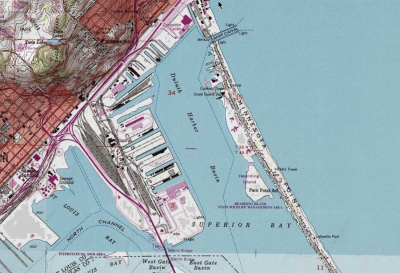
In 2017, the USGS Mercury Research Lab collaborated with researchers at the U.S. EPA National Health and Environmental Effects Research Laboratory to examine sources of mercury to fish in the Duluth-Superior Harbor of the Saint Louis River Area of Concern. Using an innovative method for source mercury identification, researchers differentiated century-old industrial contamination from current-day mercury sources, like precipitation or watershed runoff.
The final report has been published in Science of the Total Environment. The report concludes that sport fish that lived and fed in the Duluth-Superior harbor had significantly higher levels of mercury contamination than those that primarily lived and fed in Lake Superior.
Additionally, mercury source indicators reveal that the mercury in the Duluth-Superior harbor fish was from historical industrial sources. These results were paired with around 500 additional samples of organisms, sediments, and water from the lower Saint Louis River to produce the largest study of a contaminated site using these new chemical indicators.
There are many areas, both within the Great Lakes and worldwide, that are grappling with how to restore habitats where sediments, fish and other aquatic organisms are contaminated with mercury. The new method applied in this study could help resource managers plan effective mitigation strategies in areas where both historical contamination and ongoing atmospheric mercury contamination are an issue. This study was supported by the Great Lakes Restoration Initiative.

